| Coach | NA |
| Venue | Estadio Carlos V |
Flandria predictions
Predictions for Flandria: See upcoming and historic predictions for Flandria below.
Disclaimer: Past performance does not guarantee future results. Betting involves risk; only wager what you can afford to lose. Always gamble responsibly.
Flandria latest results
| 16/10 | 1 - 1 | ||
| 08/10 | 0 - 0 | ||
| 29/09 | 2 - 1 | ||
| 23/09 | 3 - 0 | ||
| 16/09 | 1 - 0 |
Primera Nacional standings
| Rank | Team | MP | W | D | L | GF | GA | GD | Pts |
|---|---|---|---|---|---|---|---|---|---|
| 1 |
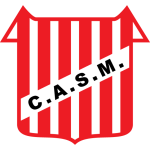 San Martin Tucuman
San Martin Tucuman
|
10 | 6 | 1 | 3 | 13 | 5 | 8 | 19 |
| 2 |
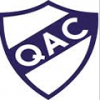 Quilmes
Quilmes
|
9 | 5 | 4 | 0 | 10 | 2 | 8 | 16 |
| 3 |
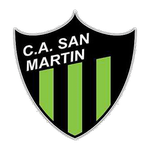 San Martin S.J.
San Martin S.J.
|
10 | 4 | 4 | 2 | 10 | 9 | 1 | 16 |
| 4 |
 Arsenal Sarandi
Arsenal Sarandi
|
10 | 4 | 3 | 3 | 10 | 9 | 1 | 15 |
| 5 |
 All Boys
All Boys
|
9 | 3 | 5 | 1 | 7 | 5 | 2 | 14 |
| 6 |
 Agropecuario
Agropecuario
|
9 | 3 | 4 | 2 | 12 | 10 | 2 | 13 |
| 7 |
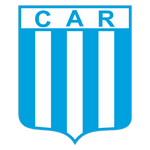 Racing Cordoba
Racing Cordoba
|
9 | 3 | 4 | 2 | 8 | 7 | 1 | 13 |
| 8 |
 Alvarado
Alvarado
|
9 | 3 | 4 | 2 | 8 | 7 | 1 | 13 |
| 9 |
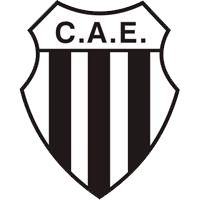 CA Estudiantes
CA Estudiantes
|
9 | 3 | 4 | 2 | 5 | 5 | 0 | 13 |
| 10 |
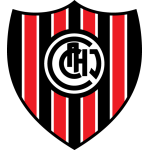 Chacarita Juniors
Chacarita Juniors
|
10 | 3 | 3 | 4 | 9 | 11 | -2 | 12 |
| 11 |
 San Miguel
San Miguel
|
9 | 1 | 7 | 1 | 5 | 5 | 0 | 10 |
| 12 |
 Tristan Suarez
Tristan Suarez
|
9 | 2 | 4 | 3 | 10 | 11 | -1 | 10 |
| 13 |
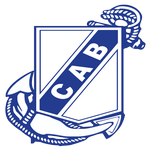 Guillermo Brown
Guillermo Brown
|
9 | 2 | 4 | 3 | 8 | 9 | -1 | 10 |
| 14 |
 Talleres Remedios
Talleres Remedios
|
9 | 2 | 4 | 3 | 6 | 7 | -1 | 10 |
| 15 |
 Gimnasia Jujuy
Gimnasia Jujuy
|
9 | 3 | 1 | 5 | 7 | 9 | -2 | 10 |
| 16 |
 Ferro Carril Oeste
Ferro Carril Oeste
|
10 | 2 | 4 | 4 | 12 | 15 | -3 | 10 |
| 17 |
 Patronato
Patronato
|
10 | 2 | 4 | 4 | 6 | 12 | -6 | 10 |
| 18 |
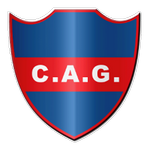 Club Atlético Güemes
Club Atlético Güemes
|
9 | 1 | 6 | 2 | 5 | 6 | -1 | 9 |
| 19 |
 Deportivo Maipu
Deportivo Maipu
|
9 | 2 | 1 | 6 | 7 | 15 | -8 | 7 |
About Flandria
Club Social y Deportivo Flandria is a football club based in Jáuregui, Luján, Buenos Aires, Argentina. Founded on May 9, 1941, Flandria is a club with a rich history and a deep connection to the community. The club was established by Julio Steverlynck, a Belgian immigrant and owner of a local textile factory, who wanted to create a recreational outlet for his employees. The club's name, Flandria, is a nod to Steverlynck's Belgian roots, specifically the Flanders region.
Flandria's team colors are yellow and black, and they play their home matches at the Estadio Carlos V, which has a seating capacity of approximately 10,000 spectators. The club's mascot is a lion, another reference to their Belgian heritage, as the lion is a prominent symbol in the Flanders region's coat of arms.
Throughout its history, Flandria has competed in various divisions of Argentine football. The club's most notable achievement came in the 1970s when they reached the Primera División, the top tier of Argentine football. They competed at this level for five seasons, from 1971 to 1975, which is considered the golden era of the club.
In recent years, Flandria has been competing in the Primera B Nacional, the second division of Argentine football. Despite not having the resources of some larger clubs, Flandria has managed to maintain a competitive team, often developing young talents from their youth academy.
Flandria's fan base, though not as large as some of the more prominent Argentine clubs, is passionate and dedicated. The fans, known as "Canarios," are known for their unwavering support and their vibrant displays during matches.
In addition to its football team, Club Social y Deportivo Flandria also has other sports divisions, including basketball and athletics, further cementing its role as a vital part of the local community. The club also runs social and cultural activities, reinforcing its commitment to community development.
Despite its ups and downs, Flandria remains a symbol of community spirit and resilience. The club's history, from its humble beginnings as a recreational outlet for factory workers to its rise to the top tier of Argentine football, is a testament to its enduring legacy. As Flandria looks to the future, it carries with it the hopes and dreams of its community, continuing to inspire with its passion for the beautiful game.
















